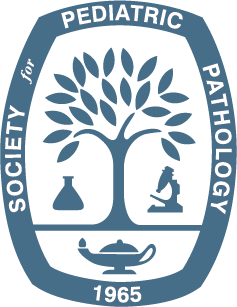2024 Slide Survey Online
Pediatric pathologists often encounter cases for which they’ve had limited exposure based on the rarity of a particular disease and/or the frequency with which it presents in their research and/or practice. They are presented with cases that are difficult to diagnose and often require additional consultation and/or work-up. Small specimen size and tissue sampling at earlier stages of a disease add to the diagnostic challenge. With the new developments and refinement of diagnostic criteria, particularly as related to genomic etiologies or associated molecular alterations, pediatric pathologists face challenges in staying up to date with new information that is frequently changing based on rapid advancements in technology. Information, tools, and strategies to address challenging cases are necessary to improve accurate diagnoses.
This activity will provide up-to-date information, including the latest research, diagnostic criteria and diagnostic tools and strategies, on a variety of diagnostic entities across the pediatric spectrum for pediatric pathologists to apply this information to their practice and/or research.
Target Audience
The target audience for this educational activity is pediatric pathologists engaged in the study and diagnosis of pediatric diseases.
Learning Objectives
- Describe advancements in diagnostic criteria and techniques.
- Apply diagnostic criteria to develop differential diagnoses.
- Integrate the most recent advances in diagnostic techniques into practice.
Accreditation Statement
The Society for Pediatric Pathology is accredited by the Accreditation Council for Continuing Medical Education (ACCME) to provide continuing medical education for physicians.
Credit Designation Statement
The Society for Pediatric Pathology designates this enduring material for a maximum of 5.0 AMA PRA Category 1 CreditsTM. Physicians should claim only the credit commensurate with the extent of their participation in the activity.
The Slide Survey Online enduring material is released in three separate case sets: Case Set 1, Case Set 2, and Case Set 3. Each case set is worth 5.0 credits.
American Board of Pathology (ABPath) Continuous Certification
This activity is registered for American Board of Pathology (ABPath) Lifelong Learning (CME) credit and Improvement in Medical Practice (Part IV) requirements of the ABPath Continuing Certification Program. For more information about CME credits contact the SPP at [email protected].
Successful completion of this CME activity, including a passing score on the post-test and participation in the evaluation component and the post-activity follow-up survey, enables the participant to satisfy the Lifelong Learning (CME) credit and Improvement in Medical Practice (Part IV) requirements in the American Board of Pathology’s (ABPath) Continuing Certification (CC) program. It is the CME activity provider’s responsibility to submit participant completion information to the ACCME for the purpose of granting credit.
Successful completion of the CME activity allows the participant to earn up to 5.0 Lifelong Learning (CME) credits and up to 5.0 Improvement in Medical Practice (Part IV) credits.
To receive credit, you must complete the post-tests with a score of 80% or better, the evaluation, and the post-activity follow up survey. You must also provide your ABPath Diplomate ID and Date of Birth (MM/DD). Your information will be shared with the ABPath through the ACCME Program and Activity Reporting System (PARS).
Canadian Physicians
Through an agreement between the Accreditation Council for Continuing Medical Education and the Royal College of Physicians and Surgeons of Canada, medical practitioners participating in the Royal College’s MOC Program may record completion of accredited activities registered under the ACCME’s “CME in Support of MOC” program in Section 3 of the Royal College’s MOC Program.

 Facebook
Facebook X
X LinkedIn
LinkedIn Forward
Forward